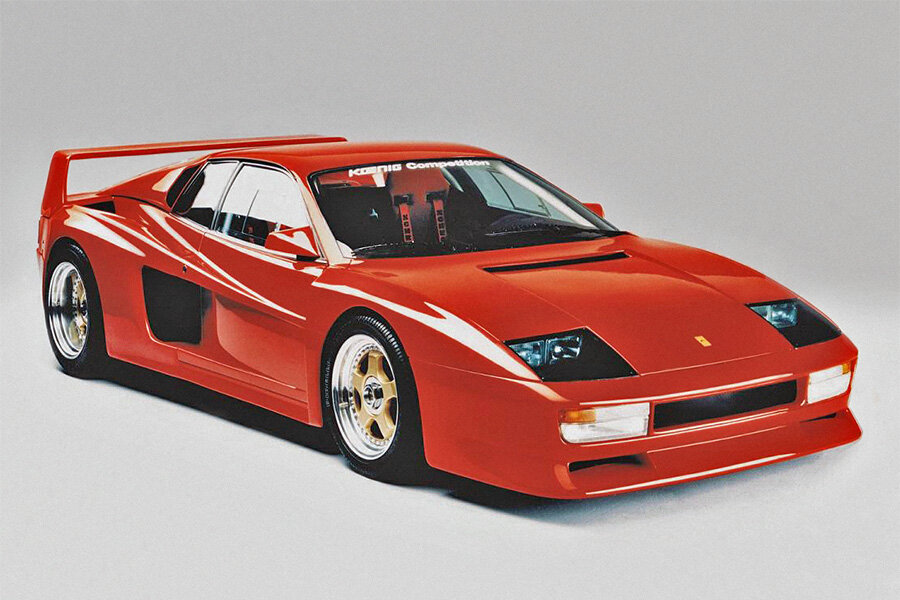Guide: Koenig Specials Ferrari Testarossa - a Historical & Technical Appraisal
/BACKGROUND
Having been among the first tuners to begin modifying premium European cars, Willy Koenig's firm already had a lot of experience with Ferrari’s Flat 12 engine by the time the Testarossa was launched in 1984.
Throughout the late seventies and early eighties, Koenig Specials had created a good number of extravagantly engineered BBs. As the Koenig BB proved so popular, it was only natural that attention turned to Ferrari's latest creation.
Customers were able to pick and choose from an extensive list of enhancements that included everything from a Koenig steering wheel to a Spider conversion or a twin turbocharged motor that produced in excess of 1000bhp.
TWIN TURBO ENGINES
Koenig’s standard Twin Turbo motor developed 700bhp thanks to a brace of KKK turbochargers, re-mapped Bosch Motronic engine management, special air-flow meters and new head gaskets. There were also new pistons, intercoolers, turbo manifolds and a sports exhaust.
By upping the compression ratio, some incredible performance figures were achieved.
0-62mph took 3.9 seconds, 0-125mph took 10.9 seconds and top speed was comfortably in excess of 200mph.
An even more expensive option was the Evolution motor which pumped out an astounding 1000bhp.
Evolution engines came with completely new Motronic engine management, new turbochargers and bigger intercoolers. The gear wheels, clutch shafts and gear shafts were reinforced and a modified oil-pump was fitted along with a bigger oil cooler.
The extra 300bhp shaved almost a half second from the 0-62mph time, just over a second from the 0-125mph time and took top speed to a reputed 215mph.
OTHER MECHANICAL MODIFICATIONS
If a new engine wasn't on your shopping list, a one-piece Koenig air filter could give the stock Testarossa a 20bhp boost.
Re-mapped Motronic added 30bhp and a complete Koenig exhaust system an additional 25bhp.
Chassis modifications focused on increased track, stiffer suspension and more effective brakes.
By using two alloy spacers and the standard wheel bolts, track could be widened by 10mm.
With spacers, liners and screws for fixed mounting at the axles, anything up to an extra 80mm was possible.
Koenig springs dropped the ride height between 20mm and 30mm. Adjustable aluminium shock absorbers and anti-roll bars were also offered.
A racing brake pack included 355mm grooved and drilled front discs, four piston calipers and competition pads.
Custom three-piece wheels came in diameters from 17 to 19-inches and a variety of widths. Colour coded centres were a frequently requested option.
BODYWORK
Two alternative body styles were available, a Coupe and Spider, both of which bucked the trend for over-done eighties conversions. If anything, the Koenig Testarossa was more restrained than Pininfarina's original design thanks to the absence of those dramatic side strakes.
Body parts could be specified in either carbon-Kevlar or glassfibre.
Koenig offered a new front spoiler, front and rear fender extensions and side skirts. There was also an engine cover with Plexiglas screen, an F40-style wing and Plexiglas headlight covers.
The Spider featured a reinforced chassis, a canvas soft top and re-profiled rear deck.
A variety of alternative front spoilers, roof spoilers and rear wings were available.
Later cars often came with wraparound front indicators.
INTERIOR
Inside, customers could order anything from a couple of bolt-on accessories right up to a totally redesigned interior with new seats, door panels and instrumentation.
Most buyers had their cars equipped with racing seats, TVs, telephones and state-of-the-art audio systems.
Anything was possible if you had deep enough pockets.
Text copyright: Supercar Nostalgia
Photo copyright: Koenig - https://www.koenig-specials.com/


























